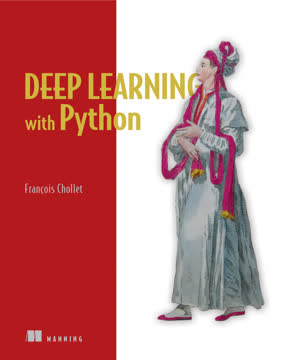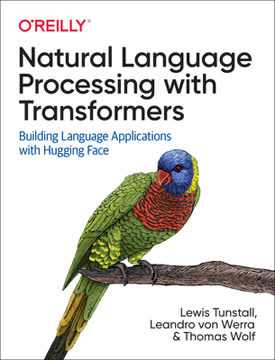Key Takeaways
1. Machine Learning: Transforming Business Through Intelligent Automation
ML is a form of AI that learns how to perform a task using different learning techniques, such as learning from examples using historical data or learning by trial and error.
Three types of ML. Machine Learning (ML) is revolutionizing industries by enabling intelligent automation. The three main types of ML are:
- Supervised Learning: Uses labeled data to learn patterns and make predictions
- Unsupervised Learning: Discovers hidden patterns in unlabeled data
- Reinforcement Learning: Learns through trial and error and feedback
Real-world applications. ML is being applied across various sectors to solve complex problems and improve efficiency:
- Financial Services: Credit risk assessment, fraud detection
- Healthcare: Medical imaging analysis, drug discovery
- Retail: Personalized recommendations, demand forecasting
- Manufacturing: Quality control, predictive maintenance
ML differs from traditional software by learning from data rather than following explicit programming rules, allowing for more adaptable and scalable solutions.
2. Financial Services: ML Revolutionizing Trading, Risk Management, and Fraud Detection
Natural language processing (NLP) models can automatically extract key entities such as people, events, organizations, and places from data sources such as SEC filing, news announcements, and earnings call transcripts.
Trading and research. ML is transforming financial services by enhancing decision-making processes:
- NLP for analyzing market sentiment and extracting key information from financial documents
- Time series analysis for predicting market trends and asset prices
- Algorithmic trading optimization using reinforcement learning
Risk management and fraud detection. ML is improving the accuracy and efficiency of critical financial operations:
- Anti-money laundering (AML): Network analysis to reveal complex relationships and identify suspicious patterns
- Trade surveillance: Anomaly detection to identify potential market abuse
- Credit risk assessment: Predictive modeling for loan default probability
ML-based solutions in finance are not only increasing operational efficiency but also improving regulatory compliance and reducing financial risks.
3. Media and Entertainment: Personalization and Content Optimization with ML
Computer vision models can automatically tag image and video content for items such as objects, genres, people, places, or themes.
Content development and management. ML is enhancing the media production and distribution workflow:
- Predictive analytics for estimating content popularity and profitability
- Automated content tagging and metadata generation for improved discoverability
- Video segmentation for personalized content delivery
Personalized recommendations. ML-powered recommendation engines are crucial for user engagement:
- Analyzing user behavior, preferences, and viewing patterns
- Real-time adaptation to user interactions
- Balancing content diversity and user preferences
These ML applications are helping media companies improve content discovery, increase user engagement, and identify new monetization opportunities in an increasingly competitive landscape.
4. Healthcare and Life Sciences: ML Enhancing Diagnosis, Drug Discovery, and Data Management
Deep learning-based solutions have been adopted to help with health data management, especially with medical information extraction from unstructured data such as doctor's notes, recorded medical conversations, and medical images.
Medical imaging analysis. ML is augmenting the capabilities of medical professionals:
- Computer vision for automated screening of medical images
- Combining image data with clinical data for more accurate diagnoses
- Addressing the shortage of qualified medical professionals
Drug discovery. ML is accelerating the complex and costly drug development process:
- Generating new molecule compounds using natural language processing techniques
- Predicting drug-target interactions
- Identifying suitable cohorts for clinical trials
Healthcare data management. ML is unlocking insights from unstructured medical data:
- Extracting information from handwritten notes, images, and audio files
- Identifying medical terms, conditions, and relationships
- Supporting medical coding and clinical decision-making processes
These ML applications are improving patient care, accelerating medical research, and increasing operational efficiency in healthcare organizations.
5. Manufacturing: ML Driving Innovation in Design, Quality Control, and Maintenance
Computer vision-based technology has been used to automate many aspects of the manufacturing lines' quality control process.
Product design and engineering. ML is revolutionizing the product development process:
- Generative design using techniques like Generative Adversarial Networks (GANs)
- Market requirement analysis and product potential estimation
- Optimization of product designs for manufacturability and performance
Quality control and yield optimization. ML is enhancing manufacturing operations:
- Automated visual inspection using computer vision
- Defect detection and classification
- Real-time process optimization for improved yield
Predictive maintenance. ML is reducing equipment downtime and maintenance costs:
- Forecasting potential equipment failures
- Optimizing maintenance schedules
- Analyzing sensor data for anomaly detection
These ML applications are helping manufacturers improve product quality, reduce costs, and increase overall operational efficiency throughout the product lifecycle.
6. Retail: ML Powering Personalized Shopping Experiences and Operational Efficiency
ML models can help generate recommended premiums by using large amounts of historical data and risk factors.
Personalized customer experiences. ML is transforming retail by tailoring interactions:
- Product recommendations based on browsing and purchase history
- Dynamic pricing optimization
- Personalized marketing campaigns
Operational efficiency. ML is streamlining retail operations:
- Demand forecasting for inventory management
- Supply chain optimization
- Fraud detection in transactions
Customer insights. ML is helping retailers understand their customers better:
- Sentiment analysis of customer reviews and social media
- Customer segmentation for targeted marketing
- Lifetime value prediction for loyalty programs
These ML applications are helping retailers improve customer satisfaction, increase sales, and optimize their operations in a highly competitive market.
7. The ML Life Cycle: From Business Understanding to Continuous Improvement
The goal of the business workflow analysis is to identify inefficiencies in the workflows and determine if ML can be applied to help eliminate pain points, improve efficiency, or even create new revenue opportunities.
Key stages of the ML life cycle:
- Business understanding and problem framing
- Data acquisition and understanding
- Data preparation and feature engineering
- Model development and training
- Model evaluation and validation
- Model deployment and integration
- Monitoring and continuous improvement
Iterative process. The ML life cycle is highly iterative, involving multiple rounds of experimentation and refinement. Key considerations include:
- Clearly defining business goals and success metrics
- Ensuring data quality and availability
- Selecting appropriate ML algorithms and techniques
- Validating model performance against business requirements
- Integrating ML solutions into existing workflows and systems
Successful implementation of ML projects requires collaboration between business stakeholders, data scientists, and IT professionals throughout the entire life cycle.
8. ML Solutions Architecture: Bridging Business Needs and Technical Implementation
ML solutions architecture covers the following areas: Business understanding, Identification and verification of ML techniques, System architecture of the ML technology platform, ML platform automation, Security and compliance.
Key responsibilities of ML solutions architects:
- Translating business requirements into ML solutions
- Designing scalable and efficient ML platforms
- Ensuring security and compliance of ML systems
- Orchestrating workflow automation for ML processes
- Facilitating collaboration between business and technical teams
Technical considerations. ML solutions architects must address various technical aspects:
- Data management and processing at scale
- Model training infrastructure and resource allocation
- Model serving and deployment strategies
- Integration with existing IT systems and workflows
- Monitoring and logging for model performance and system health
ML solutions architecture plays a crucial role in ensuring the successful implementation and scalability of ML initiatives across an organization, bridging the gap between business needs and technical implementation.
Last updated:
Similar Books









Download PDF
Download EPUB
.epub digital book format is ideal for reading ebooks on phones, tablets, and e-readers.




